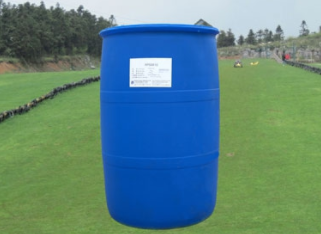Organic surfactant used in pesticide formulations can effectively reduce the surface tension of water, reduce the contact angle between liquid and biological targets, increase the spray coverage, promote the rapid absorption of liquid, significantly improve the effective utilization rate of pesticides, reduce the use of pesticides, improve the safety of pesticide use, and have the characteristics of strong resistance to rainwater scouring and infiltration. Its synergistic effect on pesticides is mainly to maintain the effect of pesticides under the condition of reducing the dosage of pesticides, and reduce the residue of pesticides.

Organosilicon additives are added to herbicides, which are mainly used for stem and leaf treatment to overcome the resistance of some plants to herbicides and improve the weeding effect. When spraying fungicides, the amount absorbed by the leaves of the agents added with organosilicon is much larger than that of ordinary agents, but the drug damage is small or equal. Organosilicon surfactants have been widely used in pesticides in many countries in the world, Its application prospect in agriculture is very broad. Its varieties mainly include: bd-3077, Silwet408, Silwet l77, silwet618, silwet625, silwetbd-3071, etc.
Additives containing alkylphenol polyoxyethylene: alkylphenol polyoxyethylene phosphate, alkylphenol polyoxyethylene ether formaldehyde condensate sulfate, alkylphenol polyoxyethylene sulfonate, alkylphenol polyoxyethylene ether, etc. are very common additives in herbicides. It is found that the degradation of these compounds is very slow, in which the biodegradation of nonylphenol polyoxyethylene ether (NPE) is 0% ~ 9%, and the final degradation product alkylphenol is more toxic. Therefore, these additives are potentially harmful to the environment. In order to maximize the efficacy and reduce the impact on the environment, pesticide workers have carried out the research on new pesticide surfactants and new dosage forms. At the same time, the development of pesticide dosage forms also drives the development of pesticide surfactants.
The development of high-efficiency new surfactants with biological source, environment-friendly, low aquatic biological toxicity, easy degradation and no toxicity to crops is rising abroad, such as alkyl polyglycoside surfactants, quaternary ammonium glucosides, alkyl ether citrate, methylated polyoxyethylene fatty acids, carbonate esters, waxes, monoterpene alcohols, fluorine, silicon, phosphorus Special surfactants of boron and other elements, which show good special properties due to their special structure.
For example, organosilicon surfactants can almost instantaneously induce pesticides to be absorbed directly through leaf pores, and have good extensibility, which can avoid the leaching of leaf treatment agents by rainwater and environmental pollution; At the same time, there are organic fluorine surfactants and new generation green surfactants (such as alkyl polyglycosides and glucose amides), but the cost is high; Compared with ordinary surfactants, the outstanding properties of fluorine surfactants are "three high and two hydrophobicity", that is, high surface activity, high heat stability, high chemical inertia, hydrophobicity and oil repellency; Silicon surfactant has the characteristics of high temperature weather aging resistance, non-toxic, non-corrosion and physiological sentiment; Boron containing surfactant is soluble in oil and water, non-volatile, extremely stable at high temperature, but can be hydrolyzed and has strong antibacterial properties.